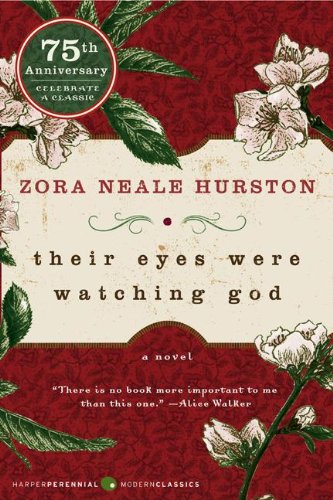
“A deeply soulful novel that comprehends love and cruelty, and separates the big people from the small of heart, without ever losing sympathy for those unfortunates who don’t know how to live properly.” —Zadie Smith
One of the most important and enduring books of the twentieth century, Their Eyes Were Watching God brings to life a Southern love story with the wit and pathos found only in the writing of Zora Neale Hurston. Out of print for almost thirty years—due largely to initial audiences’ rejection of its strong black female protagonist—Hurston’s classic has since its 1978 reissue become perhaps the most widely read and highly acclaimed novel in the canon of African-American literature.
At the height of the Harlem Renaissance during the 1930s, Zora Neale Hurston was the preeminent black woman writer in the United States. She was a sometime-collaborator with Langston Hughes and a fierce rival of Richard Wright. Her stories appeared in major magazines, she consulted on Hollywood screenplays, and she penned four novels, an autobiography, countless essays, and two books on black mythology. Yet by the late 1950s, Hurston was living in obscurity, working as a maid in a Florida hotel. She died in 1960 in a Welfare home, was buried in an unmarked grave, and quickly faded from literary consciousness until 1975 when Alice Walker almost single-handedly revived interest in her work.
Of Hurston’s fiction, Their Eyes Were Watching God is arguably the best-known and perhaps the most controversial. The novel follows the fortunes of Janie Crawford, a woman living in the black town of Eaton, Florida. Hurston sets up her characters and her locale in the first chapter, which, along with the last, acts as a framing device for the story of Janie’s life. Unlike Wright and Ralph Ellison, Hurston does not write explicitly about black people in the context of a white world–a fact that earned her scathing criticism from the social realists–but she doesn’t ignore the impact of black-white relations either: It was the time for sitting on porches beside the road. It was the time to hear things and talk. These sitters had been tongueless, earless, eyeless conveniences all day long. Mules and other brutes had occupied their skins. But now, the sun and the bossman were gone, so the skins felt powerful and human. They became lords of sounds and lesser things. They passed nations through their mouths. They sat in judgment. One person the citizens of Eaton are inclined to judge is Janie Crawford, who has married three men and been tried for the murder of one of them. Janie feels no compulsion to justify herself to the town, but she does explain herself to her friend, Phoeby, with the implicit understanding that Phoeby can “tell ’em what Ah say if you wants to. Dat’s just de same as me ’cause mah tongue is in mah friend’s mouf.”
Hurston’s use of dialect enraged other African American writers such as Wright, who accused her of pandering to white readers by giving them the black stereotypes they expected. Decades later, however, outrage has been replaced by admiration for her depictions of black life, and especially the lives of black women. In Their Eyes Were Watching God Zora Neale Hurston breathes humanity into both her men and women, and allows them to speak in their own voices. –Alix Wilber

An American Masterpiece, well worth reading “Their Eyes were Watching God” has been variously described as feminist literature (though written in 1930), African-American literature (though the story is about people, first and foremost, and race is secondary to the novel) and as a lost masterpiece. It’s a lost masterpiece. Thanks to Alice Walker and Oprah Winfrey, the book was brought back to the public’s attention.One of the issues with reading Hurston’s novel is that it’s written in dialect–in Hurston’s rendition of how…
Probably Hurston’s greatest gift to world literature “There Eyes Were Watching God,” by Zora Neale Hurston, is widely acknowledged as a beloved classic of American literature. This novel is truly one of those great works that remains both entertaining and deeply moving; it is a book for classrooms, for reading groups of all types, and for individual readers.